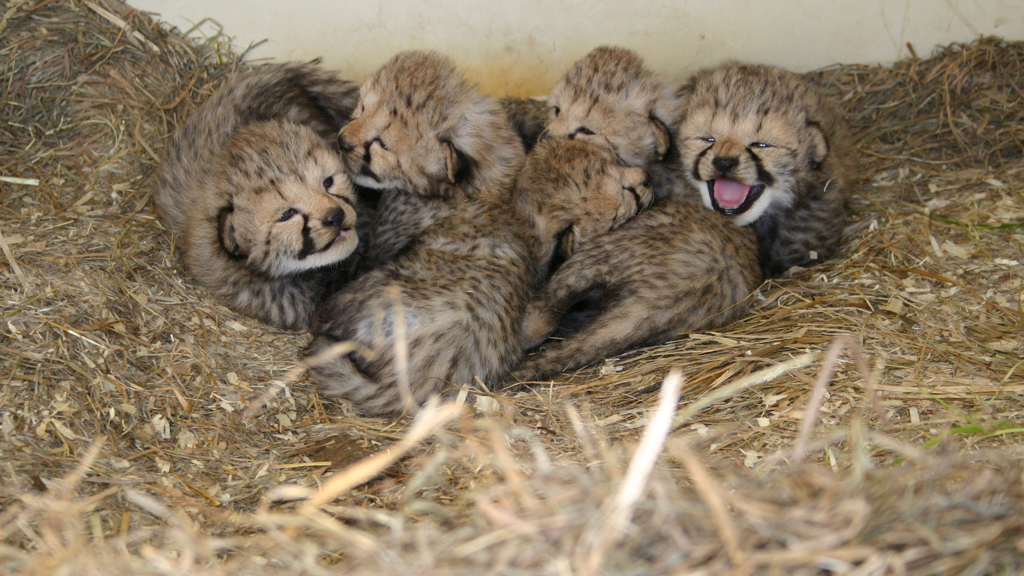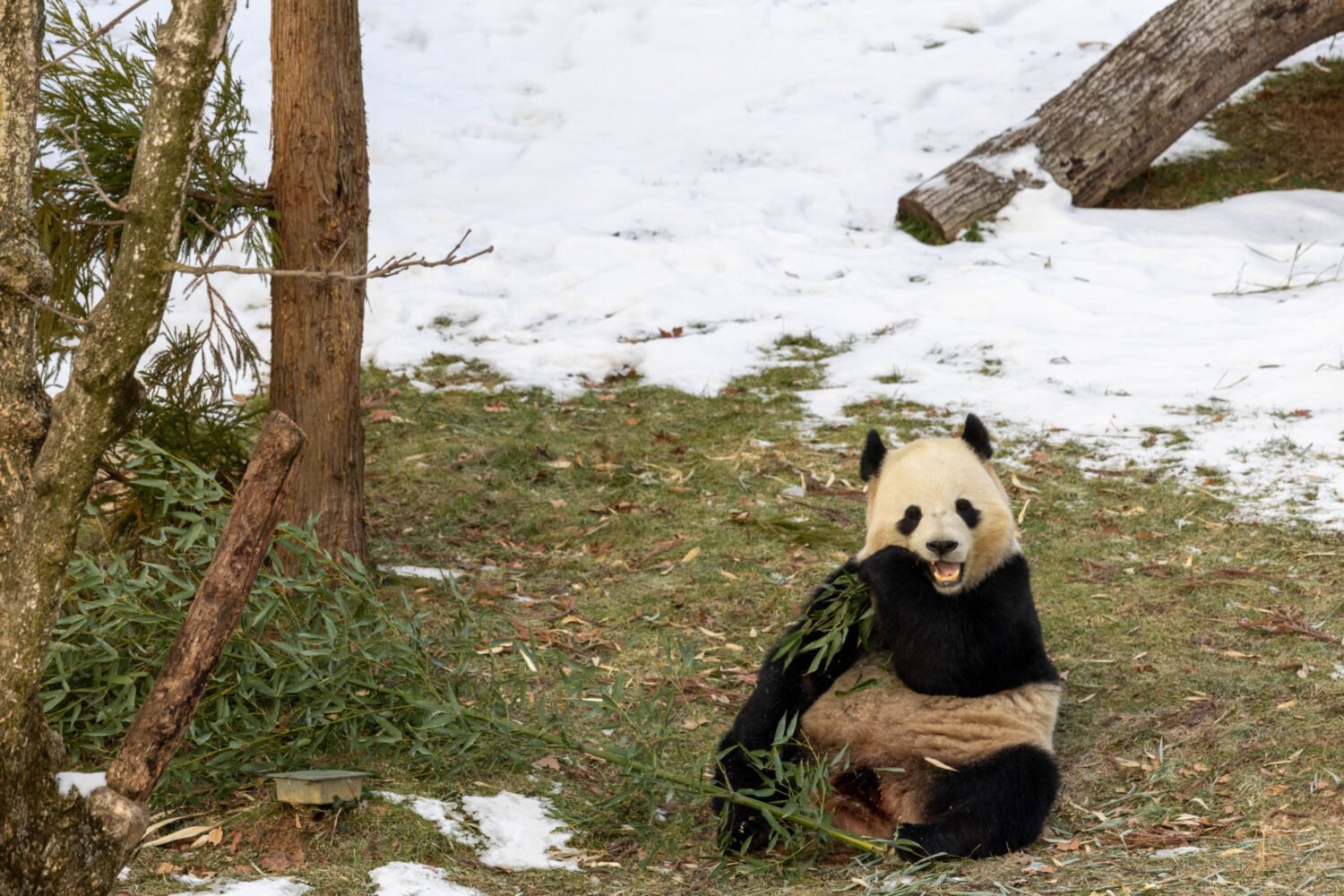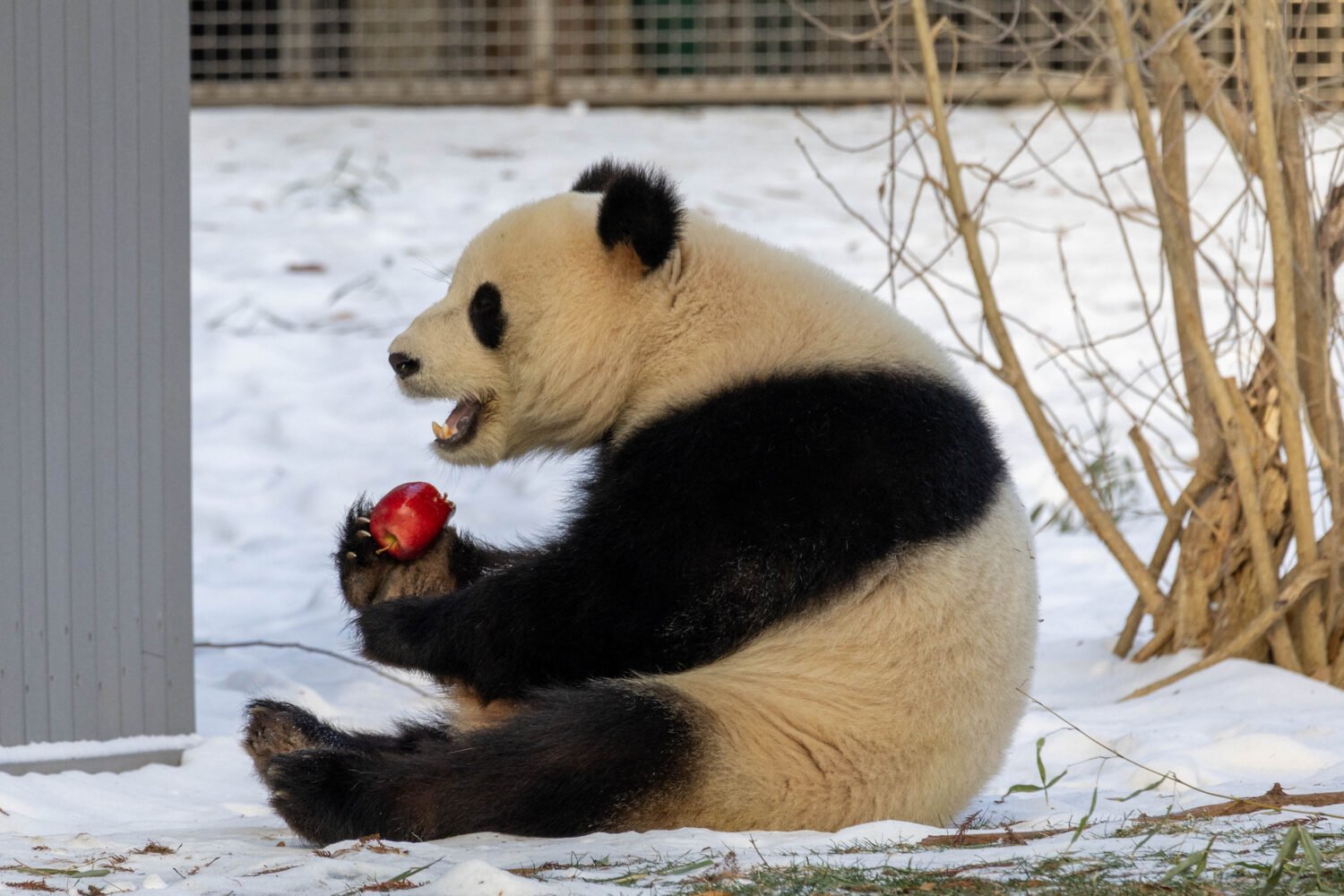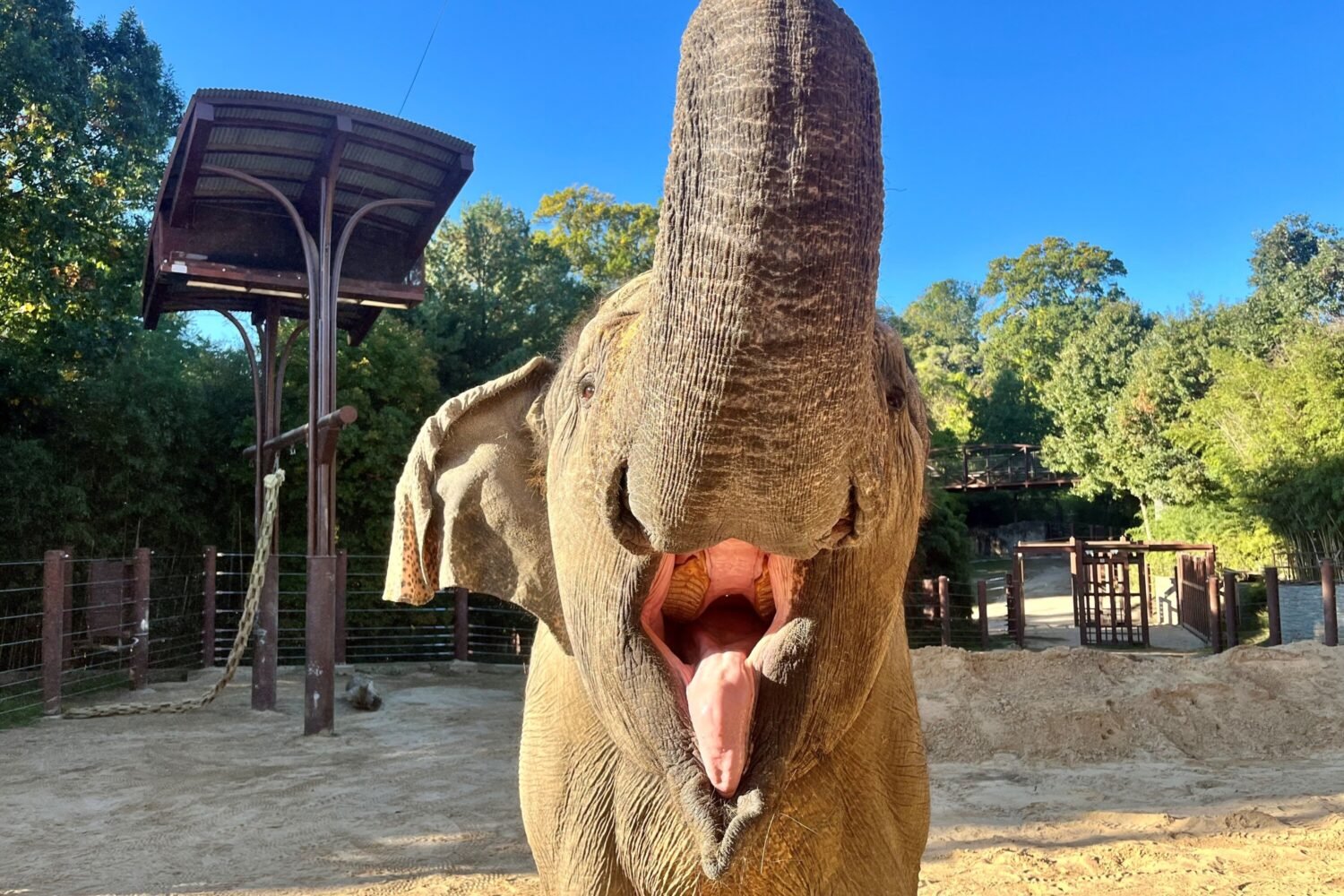After an apparently busy winter, two adult cheetahs at the Smithsonian Conservation Biology Institute in Front Royal, Virginia recently gave birth to two litters totaling 12 cubs, with ten of them reported to be healthy, growing, and nursing from their mothers.
The first litter was born March 23 when Happy, a three-year-old adult female, gave birth to five cubs. The next wave came March 28, after seven-year-old Miti birthed seven cubs, although two specimens in that litter came out much smaller and less active than their siblings and died shortly after. The Smithsonian says such deaths are common in litters this large.
Both litters contain two male and three female cubs. Miti’s cubs were sired by Nick, a six-year-old male who was the first successful birth after the Smithsonian started breeding cheetahs in 2010. Happy’s were sired by ten-year-old Alberto, who produced four previous litters. Both pairs of adult cheetahs mated last December. The Smithsonian says Miti and Alberto will likely be taken out of the breeding rotation now that their genetic material is well-represented in the captive cheetah population.
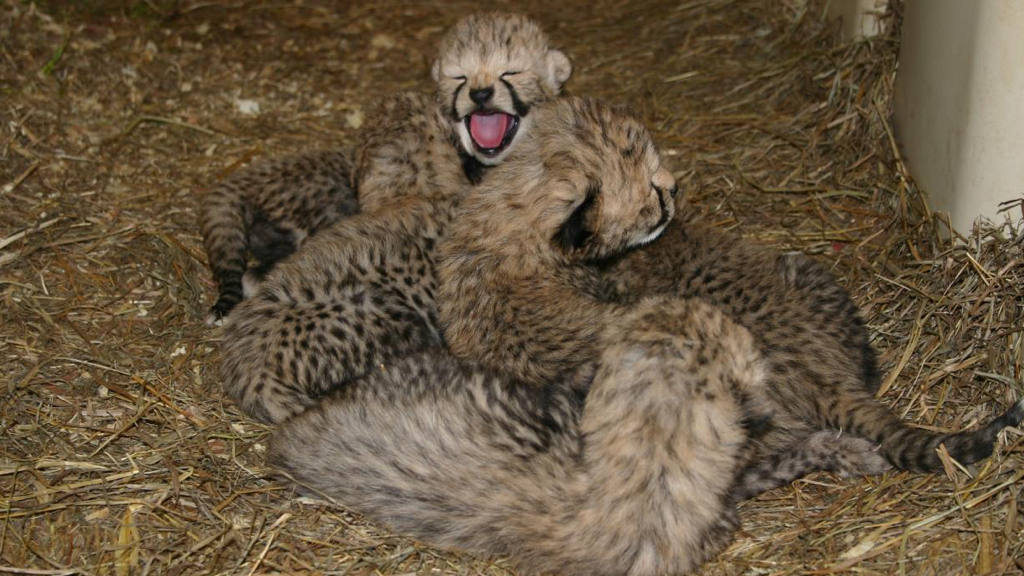
Beyond the robust progeny, the Smithsonian’s cheetah boom marks the second generation of specimens born at the Front Royal institute since the breeding program began seven years ago, with 46 cubs born over that span. Several have wound up at the National Zoo, including the two adult male cheetahs that currently reside there. The Smithsonian appears to have plenty of options with what to do with its cheetahs now.
Says Adrienne Crosier, the Smithsonian’s cheetah biologist: “The average litter size is three, so this time we’ve got an incredible pile of cubs.”
Oh, also, there’s video!

